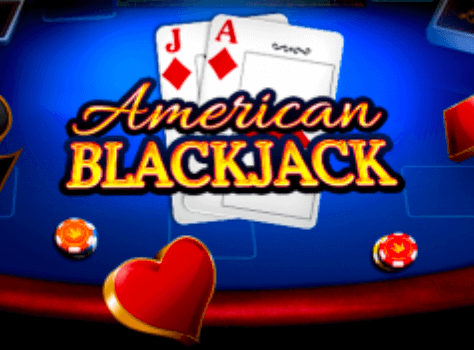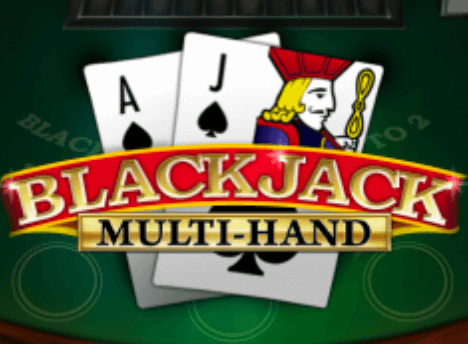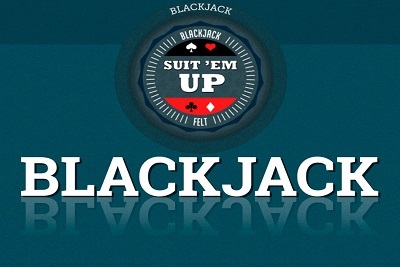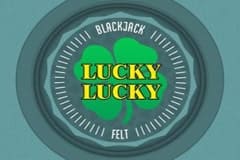Online Blackjack for Canadian Players
Top Canadian Casinos for Blackjack Players
Casino
Deposit Bonus
What's Good/Bad
Visit The Casino
❓ The Main Types Of Blackjack Offered Online
American Blackjack
This is the most popular form of online blackjack. Several variations exist with names such as Atlantic City blackjack and Vegas Strip blackjack, but the differences between each are relatively subtle. The main thing to know about American Blackjack (as opposed to its also-popular European cousin) is that a “peek” rule is used.
Under the peek rule, whenever the dealer receives an ace or a ten, he will secretly check his second (or “hole”) card immediately after he has finished dealing out the hand. Should the dealer find that he has a blackjack whilst performing this check, the hand will conclude immediately.
A dealer blackjack always results in a loss for the player, unless you also happen to have a blackjack in which case the result is a draw (or “push”).
Whilst it can be frustrating to see your bet removed before you have even had a chance to make a decision, this rule is extremely beneficial to the player.
Under European rules the dealer does not peek at his hole card, making it extremely risky to split or double down anytime the dealer is showing a ten or an ace.
Online American Blackjack is most commonly played using six to eight decks and usually offers a lower house edge than pretty much any other game at the casino. Keep your eyes open for single-deck games, as these can offer even better odds for the player.
European Blackjack
Whilst this version of the game generally has a higher house edge than Canadian Blackjack, some players do find that they have more luck whilst playing online blackjack under European rules.
The most notable change is that the dealer initially receives just one card, only drawing more after the player has finished acting on each of their own hands. As a result of this, you may find that the dealer ends up with a blackjack after you have chosen to split or double down.
Whilst the lack of a hole card is bad news for the player, several other rule changes have been made which negate a portion of the increased house advantage. Firstly, two decks are most commonly used for European Blackjack – a big drop from the six to eight decks used in the Canadian game.
European Blackjack also permits you to draw additional cards after splitting a pair of aces, which is a huge advantage for the player. Whilst American Blackjack allows you to split your hand up to three times, in this game you may only split once.
All things considered, the difference between European Blackjack and its American counterpart isn’t huge – they are certainly much more alike than they are different. The European game gives you fewer options overall in most situations, which may make the correct strategy easier for some people to learn and remember. Conversely, the additional choices available in the Canadian version can make for a more interesting and exciting game.
Most importantly, there is no avoiding the fact that European Blackjack has a higher house edge than Canadian Blackjack. For serious gamblers, this will probably be enough to steer them away from the European version.
Single Deck Blackjack
Finding a single deck game on the Vegas strip is close to impossible these days, but fortunately, that is not the case in the online blackjack world! Whilst these games are certainly less common than regular American or European blackjack, there are plenty of them around.
Playing with a single deck lowers the house edge significantly, which results in you having a much better chance at finishing your session in profit.
Sadly, some concessions do have to be made in order to balance out the advantage given by playing using a single deck. Unlike regular American Blackjack, you are only permitted to split your hand once rather than the usual three times. You are also likely to find that the option to double after splitting is unavailable as well.
Despite these changes, Single Deck Blackjack still offers an overall advantage to you as the player when compared to either European or Canadian Blackjack.
Double Exposure Blackjack
As its name suggests, Double Exposure is a blackjack variant where both of the dealer’s cards are visible to the player from the start of each hand.
This makes a huge difference to the way the game plays, and grants an enormous advantage to the player. Just like with Single Deck Blackjack, a number of other rules have been changed in order to compensate for this advantage.
In most “regular” variants of blackjack, the house pays a premium when the player wins a hand with a natural blackjack. Whilst playing Double Exposure no such premium is given, and blackjack pays even money just like any other regular player win. This makes a big difference to the house edge of the game, much bigger than you would probably expect.
A second large difference is in the way ties are dealt with at the end of each hand. Occasionally you might find a Double Exposure game where you will still get your wager back if both you and the dealer have a blackjack.
Aside from this, any other tie which would normally have resulted in a push will instead conclude with a loss for the player.
Double Exposure Blackjack can be a lot of fun to play, but you should be aware that the overall odds are not in the player’s favour when compared to the more “normal” versions of the game.
Exotic Blackjack Tables Found Online
Blackjack Switch
One of the more popular “exotic” forms of blackjack, Blackjack Switch requires you to place two equal bets for which you receive two sets of cards at the beginning of each hand.
When you would normally be choosing to hit, stand, double or split, in this game you have the additional option to switch the second card between your two separate hands.
This could enable you to make two 18s from a 20 and a 16, for example, or perhaps create an 11 on one of your hands which you could then double down afterwards.
As you would expect, some other rules have been changed in order to water down the obvious advantages such a move gives to the player.
As with Double Exposure Blackjack, no premium is paid for a natural blackjack whilst playing Blackjack Switch.
This means that all player wins simply pay even money. Additionally, whenever the dealer busts with 22 points it will result in a push rather than a win for the player.
You will certainly lose less often under these rules, but your overall profit from the hands you do win will be lower than what you would receive playing Canadian Blackjack.
Despite this, Blackjack Switch remains a popular game with a very low house edge – IF you take the time to learn and perfect the correct strategy.
Free Bet Blackjack
This game was created by the same inventor as Blackjack Switch, and shares that games rule whereby the dealer does not bust if he finishes up with 22 points.
In these situations, the hand will push and you will receive your stake back instead of winning like you would under regular blackjack rules.
You do receive a very nice incentive in return for this, however. When your card total is a 9, 10 or 11 you may opt to double down without placing an additional bet – the house puts the money in for you.
This is where the name “Free Bet Blackjack” comes from. You may also split your cards free of charge as well, although this does not apply when you have a pair of tens.
The strategy for this one is far easier to learn than that of Blackjack Switch, which makes it a little more inviting for the casual player. It is usually obvious if it is a good idea to accept the offer of a free double or split, and the remainder of the basic strategy is the same as that of Canadian Blackjack.
Spanish 21
This is the name applied to a range of alternative blackjack-style games, many of which will share some or all of the rule changes described here.
It is an exciting game with a very low house edge – perhaps even lower than the best forms of Canadian Blackjack – but the trade-offs are a very complicated basic strategy which is often difficult to memorize, alongside a huge increase in variance.
Despite the name, Spanish 21 is actually an Canadian game that gets its name from the fact that Spanish 48 card decks are utilized rather than the more common 52 card versions. The Spanish deck removes the four tens, a change which is extremely favourable to the house, but this one difference is countered by a wide number of benefits to the player.
When both player and dealer finish with 21 points, the hand concludes with a player win instead of a push. The same also applies when both player and dealer have a blackjack, although a dealer blackjack still beats a player 21.
The player can choose to double on any number of cards, rather than just the first two they are dealt, and can even choose to double a second time if, for example, doubling down on nine results in an eleven.
Should you obtain a five-card 21 your bet will pay a premium of 3:2, increasing still further for six and seven-card 21s up to a maximum of 3:1. There is also a 3:2 bonus paid for a 21 comprised of any 6-7-8 or 7-7-7, bumping up to 2:1 should these cards be suited, and 3:1 for all spades.
Many casinos offer a jackpot for suited 7-7-7 hands when the dealer is also showing a seven, but the actual value of this prize can vary dramatically.
In case you hadn’t already noticed, Spanish 21 is the most complicated version of blackjack described on this page by far. The skill required to play this game correctly will make it very fun and exciting for some players, whilst being a huge turn-off for others. It’s definitely worth checking out though, to see if it’s for you!
Pontoon
This has to be the most confusing title for any game that generally comes under the umbrella of blackjack. Many years ago, the names Pontoon and Blackjack could sometimes be used interchangeably to describe the same game. Pontoon was later used as an alternative title for some forms of Spanish 21, or at least, a similar game which also used Spanish decks.
Nowadays, the name Pontoon is most often given to a very different game. Whilst sharing many similarities with Blackjack, and possibly even being an earlier version of it, the strategy is quite different. You should make sure you understand exactly which game and rules you are actually playing before placing any large bets!
The biggest giveaway as to whether you are playing the modern game of Pontoon is the fact that you do not get to see either of the dealer’s cards in this game. This is obviously a huge advantage for the house, so like usual, the player receives several benefits in order to balance this.
Any combination of an ace and a ten-point card (including after splitting) counts as a blackjack (or “pontoon”) in this game. Any hand containing five cards, irrespective of value, is labelled a five-card trick and beats any dealer hand except for a pontoon.
You are permitted to hit after doubling, should you wish, and can also double down when holding three or four cards instead of this only being allowed with your first two.
Several other subtle changes are normally enforced as compared to Canadian and European Blackjack, and the resulting basic strategy is completely different. This isn’t one to rush into playing without plenty of research, but the perfect play does result in a very low house edge.
Deal or No Deal BJ
This unusual mix of the casino classic blackjack and the hugely popular game show “Deal or No Deal” may not sound like the most obvious combination, but definitely results in an interesting game! Normal blackjack rules apply in the majority of scenarios, so your knowledge of basic strategy will still be of use here unlike Pontoon or Spanish 21.
At the beginning of each hand, the banker will make you an offer determined by the value of your cards, along with the value of the dealer’s visible card.
As you might expect, when you have a 16 against a dealer 10 the banker will rate your hand as being practically worthless. At the other end of the spectrum, a player 11 against a dealer 5 might net you an offer closer to double your initial wager.
The banker will continue to make further offers as you make decisions, but you are free to ignore them and just continue to play normally should you wish. There are some situations where the banker’s offer can be tempting, but you only ever receive a really good offer when you are already in an extremely favorable position.
Overall, the addition of the banker offers is a nice little extra but doesn’t really have much of an effect on the way the game plays.
Super Fun 21
Like Spanish 21, this game gives you a host of additional options in virtually every possible situation, with the intention of providing a more interesting and varied game than regular blackjack.
Taken on its own merits Super Fun 21 can indeed be a lot of fun, although once again you might want to keep a dedicated strategy card on hand to help you work out which of the many choices you are being offered is the correct one to take!
A single 52 card deck is most commonly used to play Super Fun 21, although you do sometimes find it being offered as a double-deck game. Like European Blackjack you are permitted to hit split aces, however, in this game you can also double down after splitting aces too. Doubling is allowed with any two initial cards, and the option remains available after hitting as well.
Accumulating six cards in your hand regardless of their points total results in an automatic win for the player, as does reaching any five cards that add up to 21.
A five-card 21 results in a 3:2 premium pay-out, and player blackjacks always give a win to the player although these only pay even money.
This game is nowhere near as complex as Spanish 21, and the rule changes made do spice up the action significantly. If you have become tired of regular blackjack, consider taking a look at this one.





 All of the games described above are computerized versions of blackjack which utilize a random number generator to determine the order of cards handed out by the virtual “dealer”. This makes for a very fast game of blackjack, but it doesn’t really FEEL the same as sitting down at a table in the casino to play the game.
All of the games described above are computerized versions of blackjack which utilize a random number generator to determine the order of cards handed out by the virtual “dealer”. This makes for a very fast game of blackjack, but it doesn’t really FEEL the same as sitting down at a table in the casino to play the game.


